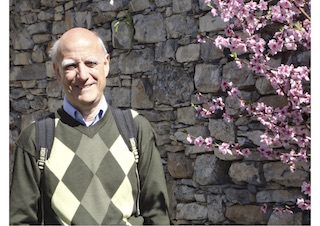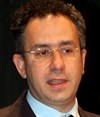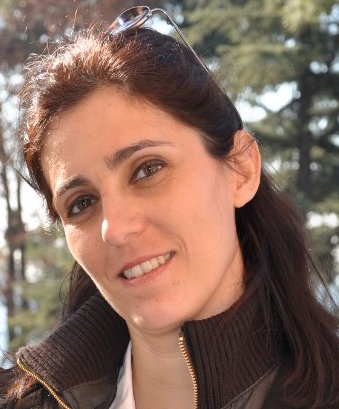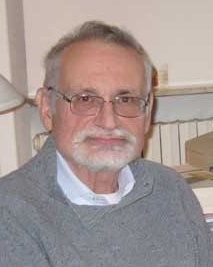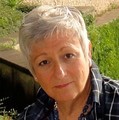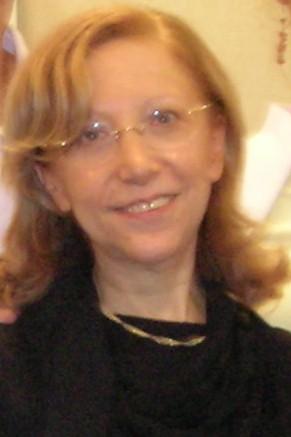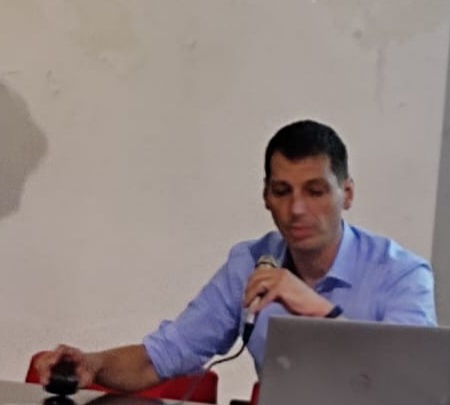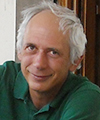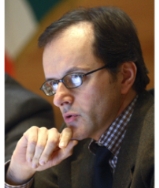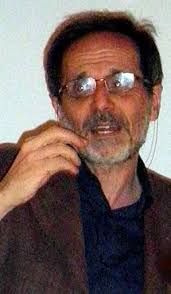Studying at the University of Verona
Here you can find information on the organisational aspects of the Programme, lecture timetables, learning activities and useful contact details for your time at the University, from enrolment to graduation.
Academic calendar
The academic calendar shows the deadlines and scheduled events that are relevant to students, teaching and technical-administrative staff of the University. Public holidays and University closures are also indicated. The academic year normally begins on 1 October each year and ends on 30 September of the following year.
Course calendar
The Academic Calendar sets out the degree programme lecture and exam timetables, as well as the relevant university closure dates..
| Period | From | To |
|---|---|---|
| I semestrino A | Sep 30, 2013 | Nov 16, 2013 |
| I semestrino B | Nov 18, 2013 | Jan 18, 2014 |
| II semestrino A | Feb 24, 2014 | Apr 12, 2014 |
| II semestrino B | Apr 14, 2014 | Jun 7, 2014 |
| Session | From | To |
|---|---|---|
| Sessione invernale | Jan 20, 2014 | Feb 22, 2014 |
| Sessione estiva | Jun 9, 2014 | Jul 31, 2014 |
| Sessione autunnale | Sep 1, 2014 | Sep 27, 2014 |
| Session | From | To |
|---|---|---|
| Sessione estiva | Jul 8, 2014 | Jul 9, 2014 |
| Sessione autunnale (I appello) | Oct 28, 2014 | Oct 29, 2014 |
| Sessione autunnale (II appello) | Dec 16, 2014 | Dec 17, 2014 |
| Sessione invernale straordinaria | Mar 17, 2015 | Mar 18, 2015 |
| Period | From | To |
|---|---|---|
| Festa di Ognissanti | Nov 1, 2013 | Nov 1, 2013 |
| Festa dell'Immacolata Concezione | Dec 8, 2013 | Dec 8, 2013 |
| VACANZE DI NATALE | Dec 22, 2013 | Jan 6, 2014 |
| Vacanze Pasquali | Apr 17, 2014 | Apr 22, 2014 |
| Festa della Liberazione | Apr 25, 2014 | Apr 25, 2014 |
| Festa dei lavoratori | May 1, 2014 | May 1, 2014 |
| Festa del S. Patrono S. Zeno | May 21, 2014 | May 21, 2014 |
| Festa della Repubblica | Jun 2, 2014 | Jun 2, 2014 |
| Vacanze Estive | Aug 11, 2014 | Aug 15, 2014 |
Exam calendar
Exam dates and rounds are managed by the relevant Culture and Civilisation Teaching and Student Services Unit.
To view all the exam sessions available, please use the Exam dashboard on ESSE3.
If you forgot your login details or have problems logging in, please contact the relevant IT HelpDesk, or check the login details recovery web page.
Should you have any doubts or questions, please check the Enrollment FAQs
Academic staff

Avezzu' Guido
 guido.avezzu@univr.it
guido.avezzu@univr.it

Bassetti Massimiliano
 massimiliano.bassetti@univr.it
massimiliano.bassetti@univr.it
 045802 8376
045802 8376
Capelli Roberta
 alberto.cavarzere@univr.it
alberto.cavarzere@univr.it

Chiecchi Giuseppe
 giuseppe.chiecchi@univr.it
giuseppe.chiecchi@univr.it
 +39 045802 8117
+39 045802 8117
 giorgio.graffi@univr.it
giorgio.graffi@univr.it
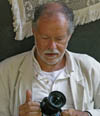
Mastrocinque Attilio
 attilio.mastrocinque@univr.it
attilio.mastrocinque@univr.it
 +39 045802 8386
+39 045802 8386
 linda.napolitano@univr.it
linda.napolitano@univr.it

Pasini Roberto
 pasini.roberto@univr.it
pasini.roberto@univr.it
 +39 045802 8121
+39 045802 8121
 alberto.scandola@univr.it
alberto.scandola@univr.it
Tani Stefano
 stefano.tani@univr.it
stefano.tani@univr.it
 +39 045802 8110
+39 045802 8110
 gianmaria.varanini@univr.it
gianmaria.varanini@univr.it
Study Plan
The Study Plan includes all modules, teaching and learning activities that each student will need to undertake during their time at the University.
Please select your Study Plan based on your enrollment year.
1° Year
| Modules | Credits | TAF | SSD |
|---|
2° Year activated in the A.Y. 2014/2015
| Modules | Credits | TAF | SSD |
|---|
3° Year activated in the A.Y. 2015/2016
| Modules | Credits | TAF | SSD |
|---|
| Modules | Credits | TAF | SSD |
|---|
| Modules | Credits | TAF | SSD |
|---|
| Modules | Credits | TAF | SSD |
|---|
| Modules | Credits | TAF | SSD |
|---|
Legend | Type of training activity (TTA)
TAF (Type of Educational Activity) All courses and activities are classified into different types of educational activities, indicated by a letter.
Human Geography (p) (2014/2015)
Teaching code
4S000910
Teacher
Coordinator
Credits
6
Language
Italian
Scientific Disciplinary Sector (SSD)
M-GGR/01 - GEOGRAPHY
Period
Semestrino IB dal Nov 17, 2014 al Jan 17, 2015.
Learning outcomes
This course is aimed at understanding the relationship between social and environmental dynamics, evaluating the use of the Earth by human societies; interpreting population distribution patterns and change, and analyzing cultural landscapes as a result of diffusion processes.
Program
Prerequisites: Students must have taken and passed the exam for the introductory course - Introduction to the study of territory integrated in the course Introduction to the study of geography and history, for a total of 12 credits.
Course Content: The relationship between man/nature and environmental imbalances, economic activities and concepts of development, processes and demographic cycles, human mobility, and globalization.
Textbooks:
A handbook to choose from:
GREINER A. L., DEMATTEIS G., LANZA C., Geografia umana. Un approccio visuale, Utet 2012
- FELLMANN J.D., GETIS A., JETIS J., Geografia umana, Milano, McGraw-Hill, 2007-
- DE BLIJ H.J., MURPHY A.B.. Geografia umana. Cultura società spazio. Bologna, Zanichelli, u.e.
A text of your choice:
ANGELI A., SALVINI S., Popolazione e sviluppo nelle regioni del mondo, Bologna, Il Mulino, 2008.
MASSEY D., JESS P. , DELL’AGNESE E., Luoghi, culture e globalizzazione, Torino, Utet 2001.
A meeting will be requested of all students, in particular non-attending ones, in order to select the most appropriate choice.
Teaching methods: lectures with slide presentations focused on concepts and problems; with the possibility of conducting individual in-depth research on single issues.
Examination Methods
oral exam, which will take account the assessment of individual in-depth research presented during the course.
Type D and Type F activities
Modules not yet included
Career prospects
Module/Programme news
News for students
There you will find information, resources and services useful during your time at the University (Student’s exam record, your study plan on ESSE3, Distance Learning courses, university email account, office forms, administrative procedures, etc.). You can log into MyUnivr with your GIA login details: only in this way will you be able to receive notification of all the notices from your teachers and your secretariat via email and soon also via the Univr app.
Graduation
List of theses and work experience proposals
| theses proposals | Research area |
|---|---|
| tesi di Glottologia, Storia comparata, Linguistica storica | ENGLISH LANGUAGE - Grammar and Syntax – Grammatik und Syntax |
| tesi di Glottologia, Storia comparata, Linguistica storica | GERMANIC LANGUAGE - Dialectology - Dialektologie |
| tesi di Glottologia, Storia comparata, Linguistica storica | HUMANITIES & SOCIAL STUDIES - HUMANITIES & SOCIAL STUDIES |
| tesi di Glottologia, Storia comparata, Linguistica storica | Indo-European languages & literatures - Indo-European languages & literatures |
| tesi di Glottologia, Storia comparata, Linguistica storica | LINGUISTICS - LINGUISTICS |
| Stage | Research area |
|---|---|
| Lavorare in archivio | Various topics |
| L'iter del libro in biblioteca | Various topics |
Gestione carriere
Linguistic training CLA
Student mentoring
Requisiti classi di abilitazione insegnamento
Requisiti necessari per accedere alle classi di abilitazione per l'insegnamento.
vedi allegato pdf
Inoltre, per informazioni sui 24 CFU nelle discipline antropo-psico-pedagogiche e nelle metodologie e tecnologie didattiche, si veda -> LINK
Documents
| Title | Info File |
|---|---|
|
|
pdf, it, 307 KB, 30/11/21 |





